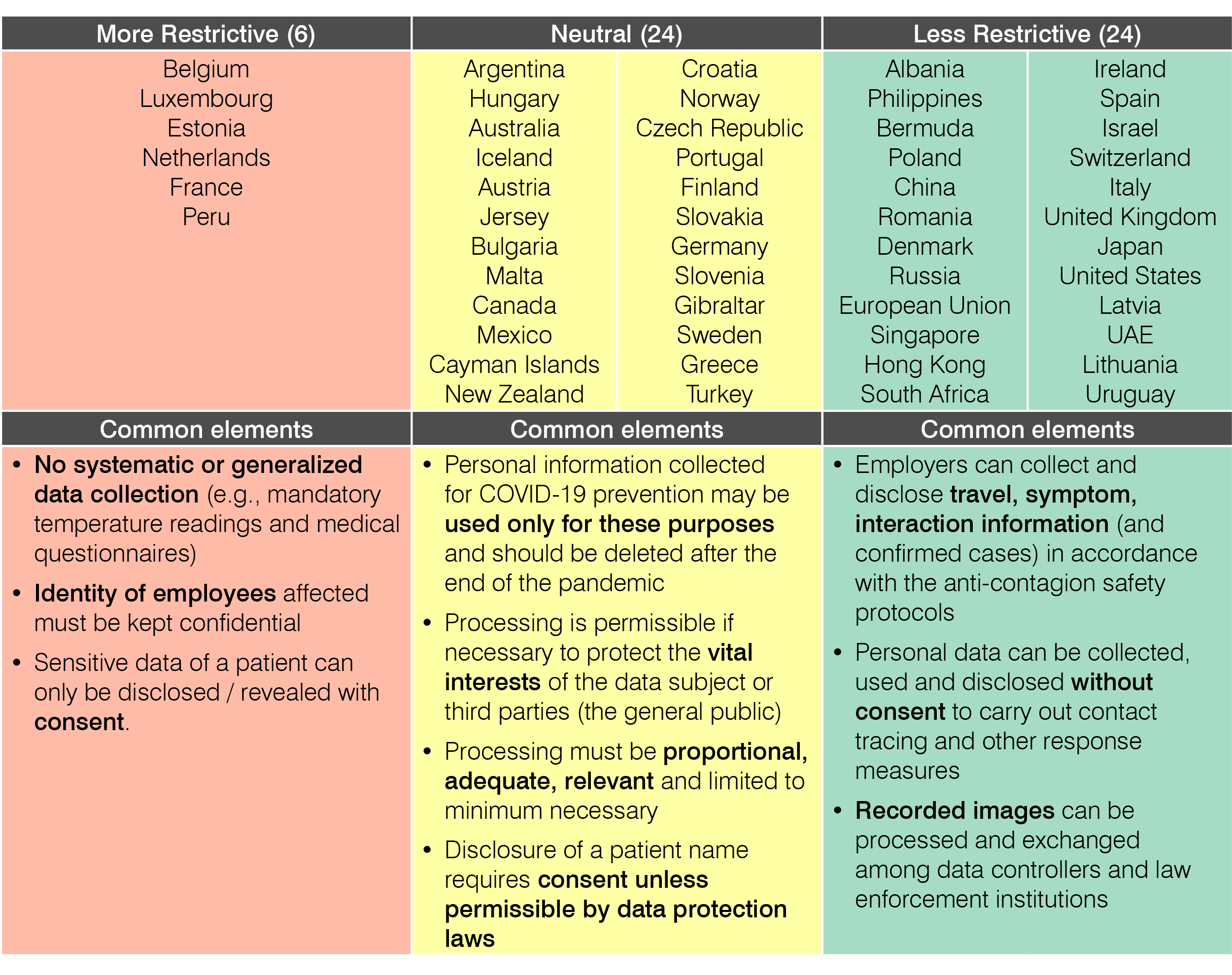Global Regulatory Guidance for COVID-19 Privacy and Security Issues: Key Takeaways from 60+ Jurisdictions


More than 60 U.S. and global data protection authorities and governmental agencies have issued guidance on health data collection, COVID-19 diagnosis disclosure, work-at-home practices, and return-to-work approaches. The guidance concerning company processing of personal health information related to COVID-19 varies in its level of restrictiveness. Generally, more restrictive countries prohibit systematic or general data collection and disclosure of the identity of individuals who are suspected or confirmed to be impacted by COVID-19. Less restrictive countries acknowledge that processing may be permissible if necessary to protect the vital interests of the data subject or third parties (the general public), but that processing must be proportional, adequate, relevant and limited to the minimum necessary.
The table below shows where each of the countries that has released guidance falls with respect to restrictiveness of processing. We also summarize the guidance in actionable dos and don’ts.
Our team is assisting many clients in addressing challenging legal, operational, and compliance challenges related to COVID-19. If you would like to discuss those that you are facing, please contact us:
Tyler Newby
Partner & Co-Chair, Privacy & Cybersecurity Practice
tnewby@fenwick.com
The table below summarizes common elements or perspectives for each level of restrictiveness. (Note: Some slight variations across jurisdictions may exist. Not all jurisdictions are represented.)

The following dos and don’ts help summarize some of the commonalities and key takeaways across the regulatory guidance.
Data Collection and Prevention Efforts
Don’ts. Generally sensitive or restricted practices:
Dos. Generally acceptable and/or recommended practices:
Disclosures of Names of Individuals with Confirmed or Suspected Cases
Don’ts. Disclosure of impacted individuals should never be made to:
Dos. Disclosures of the name of the impacted individual should only be made in three limited circumstances:
Returning to the Workplace
Do’s. Follow the approach outlined below, which is based on guidance from the Centers for Disease Control and Prevention (CDC), the Equal Employment Opportunity Commission (EEOC) and global data protection authorities, to comply with applicable regulations and best practices:
Testing. Measure or verify employee/worker wellness through temperature readings.
Office Strategy. Develop an office strategy for minimizing risk going forward. Options include:
Contact Tracing. Track individual contact using technology.
Disaster Recovery Resumption. Approach the return-to-work situation in the same way you might for disaster recovery
Remote Working. Encourage continued remote working, especially for at-risk groups.
The above summary of regulatory guidance is not meant to be all-inclusive, and organizations are recommended to review the source of the information directly for definitive guidance, especially given the variations that may exist across jurisdictions. The International Association of Privacy Professionals have compiled a resource of links to the original regulatory guidance for further review: click here .
*Brent Tuttle and Jim McKenzie are privacy and cybersecurity advisors at Fenwick and contributed to this research and report.